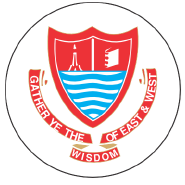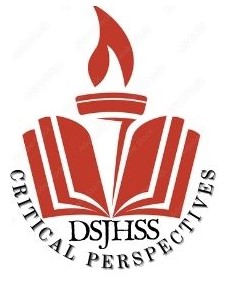Unlocking the Economic Potential of India: The role of Human Capital
Keywords:
Human Capital, Economic Growth, Life Expectancy, Capital Formation, IndiaAbstract
Human capital is driving the economic growth, as it enhances the labor’s productivity. This leads to increase the efficiency and competitiveness of the country. Hence, investment on education creates more capable human capital, which is crucial for sustainable economic growth. Hence, this study tries to explore the pivot role of human capital by addresses the crucial question that does human capital positively influence economic growth? Hence, this study is used secondary dataset from 1980 to 2023. The study analyze the objective by using autoregressive distributed lag (ARDL) and Granger causality test following the augmented Dicky-Fuller (ADF) and Bounds tests. The finding reveals that the key indicators of human capital including domestic health expenditure, school enrollment and life expectancy has significant impact on economic growth of Indian’s economy on both in the short, as well as, in long-run. Furthermore, significantly one-sided Granger causalities are found from life expectancy to health expenditure, health expenditure to economic growth, economic growth to life expectancy, school enrollment to economic growth, health expenditure to gross capital formation, gross capital formation to life expectancy, and finally school enrollment to gross capital formation. No two-tailed causality is found. Lastly, based on the findings, the study suggested that policymakers should understand the importance of health expenditure by allocating budget, access to education by improving infrastructure, and enhancing life expectancy by proving health care facilities. These measures are essential to stimulate long-term economic growth.
Downloads
References
Agiomirgianakis, G., Asteriou, D., & Monastiriotis, V. (2002). Human capital and economic growth revisited: A dynamic panel data study. International advances in economic research, 8(3), 177-187.
Barro, R. J. (1998). Human capital and growth in cross-country regressions. Harvard University, 1-56.
Barro, R. J., Mankiw, N. G., & Sala-i-Martin, X. (1992). Capital mobility in neoclassical models of growth (No. w4206). National Bureau of Economic Research.
Benhabib, J., & Spiegel, M. M. (1994). The role of human capital in economic development evidence from aggregate cross-country data. Journal of Monetary economics, 34(2), 143-173.
Galor, O., & Tsiddon, D. (1997). The distribution of human capital and economic growth. Journal of Economic Growth, 2(1), 93-124.
Celik, E. U., Omay, T., & Tengilimoglu, D. (2023). Convergence of economic growth and health expenditures in OECD countries: evidence from non-linear unit root tests. Frontiers in Public Health, 11, 1125968.
Eze, C. G. (2023). Impact of human capital investment on economic growth in Nigeria: Econometric approach of Autoregressive Distributive Lag Model (ARDL). World Journal of Advanced Research and Reviews, 18(2), 1096-1110.
Fuka, J., Baťa, R., & Šrámková, L. (2023). Effective management of waste processing as a tool for improving public services and economy in municipality. International Journal of Environmental Science and Technology, 20(2), 1315-1328.
Gyimah-Brempong, K., & Wilson, M. (2004). Health human capital and economic growth in Sub-Saharan African and OECD countries. The quarterly review of economics and finance, 44(2), 296-320.
Ghouse, S., Babu, S., Nai, K., Hooper, P. A., & Jeffers, J. R. (2018). The influence of laser parameters, scanning strategies and material on the fatigue strength of a stochastic porous structure. Additive Manufacturing, 22, 290-301.
Guoru, F., Hanif, M. H., & Yousaf, U. S. (2023). Inquiring the impact of rural–urban migration, construction sector, and agriculture irrigated land on environmental degradation: insights from urbanized Asian countries. Environmental Science and Pollution Research, 30(57), 120707-120721.
Granger, C. W. (1969). Investigating causal relations by econometric models and cross-spectral methods. Econometrica: journal of the Econometric Society, 424-438.
Hanushek, E. A. (2013). Economic growth in developing countries: The role of human capital. Economics of education review, 37, 204-212.
Kalemli-Ozcan, S., Ryder, H. E., & Weil, D. N. (2000). Mortality decline, human capital investment, and economic growth. Journal of development economics, 62(1), 1-23.
Kalemli-Ozcan, S., Ryder, H. E., & Weil, D. N. (2000). Mortality decline, human capital investment, and economic growth. Journal of development economics, 62(1), 1-23.
Mincer, J., & Jovanovic, B. (1981). Labor mobility and wages. In Studies in labor markets (pp. 21-64). University of Chicago Press.
Matousek, R., & Tzeremes, N. G. (2021). The asymmetric impact of human capital on economic growth. Empirical Economics, 60(3), 1309-1334.
Nelson, R. R., & Phelps, E. S. (1966). Investment in humans, technological diffusion, and economic growth. The American economic review, 56(1/2), 69-75.
Nwude, C., Nwaeze, C., & Nwude, C. A. (2023). Government expenditure and economic growth: evidence from the critical sectors in an emerging economy. Qeios.
Pesaran, M. H., Shin, Y., & Smith, R. J. (2001). Bounds testing approaches to the analysis of level relationships. Journal of applied econometrics, 16(3), 289-326.
Shukla, S. (2017). Innovation and economic growth: A case of India. Humanities & Social Sciences Reviews, 5(2), 64-70.
Setiawan, A. B., Yusuf, M., Yudistira, D., & Nugroho, A. D. (2023). Determining Economic Growth And Life Expectancy Linkages In Indonesia: A Simultanous Equation Model. Jurnal Pendidikan Ekonomi Dan Bisnis (JPEB), 11(01), 12-25.
Shrestha, M. B., & Bhatta, G. R. (2018). Selecting appropriate methodological framework for time series data analysis. The Journal of Finance and Data Science, 4(2), 71-89.
Van Leeuwen, B., & Foldvari, P. (2008). Human capital and economic growth in Asia 1890–2000: A time‐series analysis. Asian Economic Journal, 22(3), 225-240.
Yousaf, U. S., Ali, F., Aziz, B., & Sarwar, S. (2022). What causes environmental degradation in Pakistan? Embossing the role of fossil fuel energy consumption in the view of ecological footprint. Environmental Science and Pollution Research, 1-11.
Yousaf, U. S., Ali, F., Syed, S. H., Aziz, B., & Sarwar, S. (2022). Exploring environment sensitivity to fiscal and monetary policies in China: using ecological footprints as a contemporary proxy. Environmental Science and Pollution Research, 29(24), 36412-36425.
Yousaf, U. S., Ali, F., Aziz, B., Hussain, S., & Sawar, S. (2024). Assessing the impact of renewable energy and financial development on environment quality in Asian emerging economies (AEEs). Environment, Development and Sustainability, 1-25.
Yan, W., & Yudong, Y. (2003). Sources of China's economic growth 1952–1999: incorporating human capital accumulation. China economic review, 14(1), 32-52.
Downloads
Published
License
Copyright (c) 2024 Usman saleem yousaf Qazi, Arifa Saeed, Farhan Ali (Author)

This work is licensed under a Creative Commons Attribution 4.0 International License.








